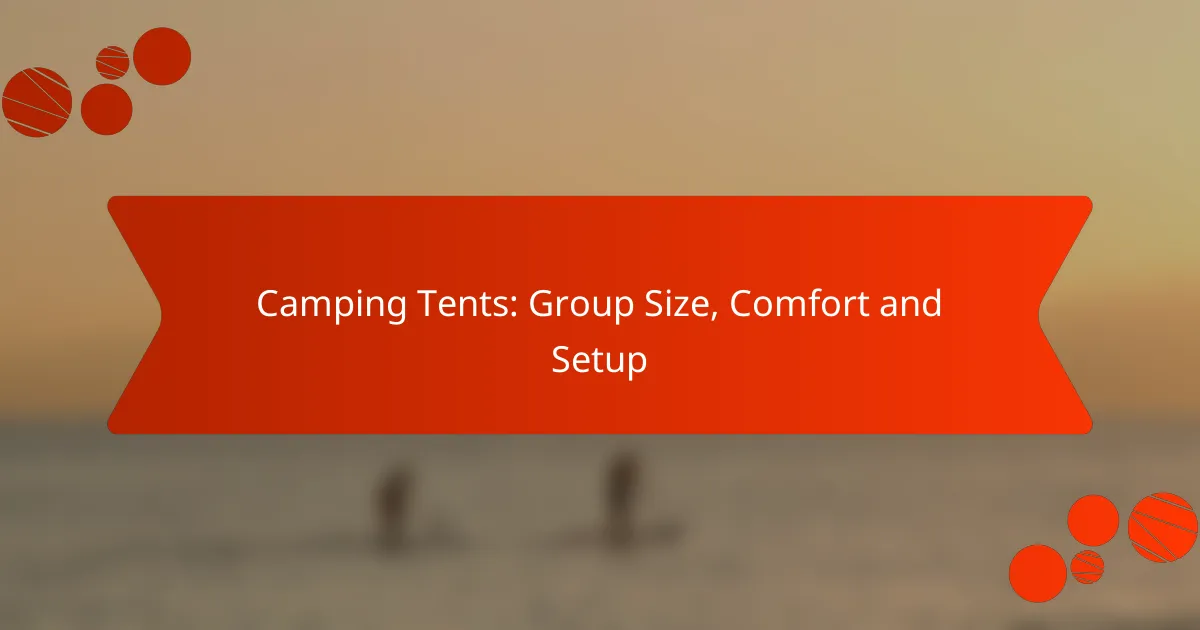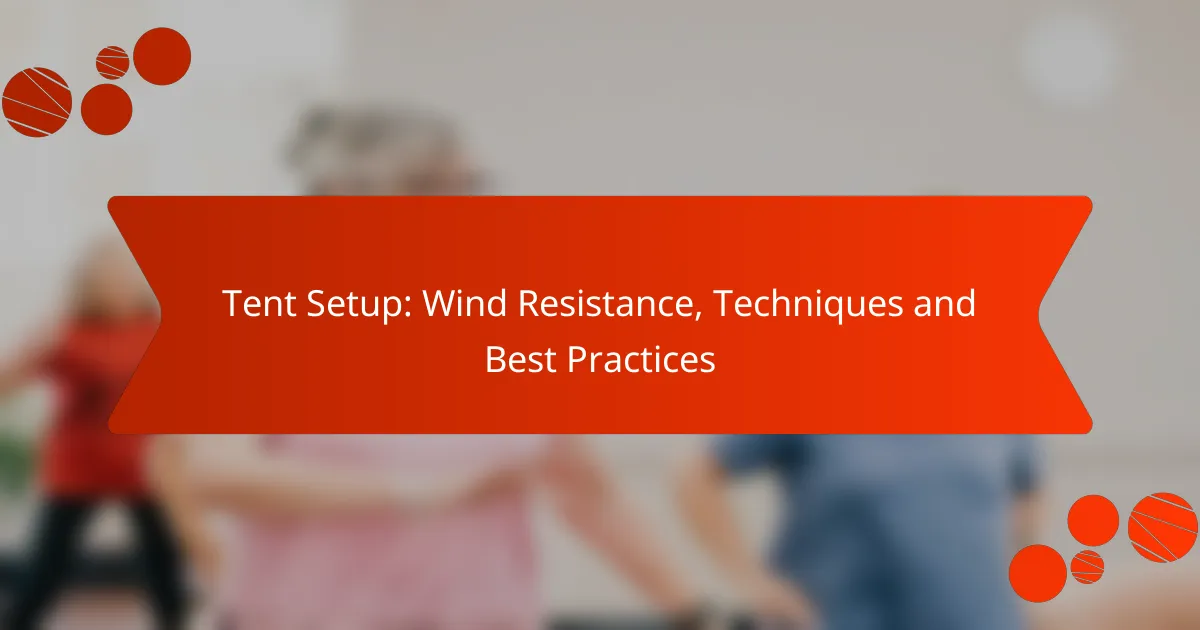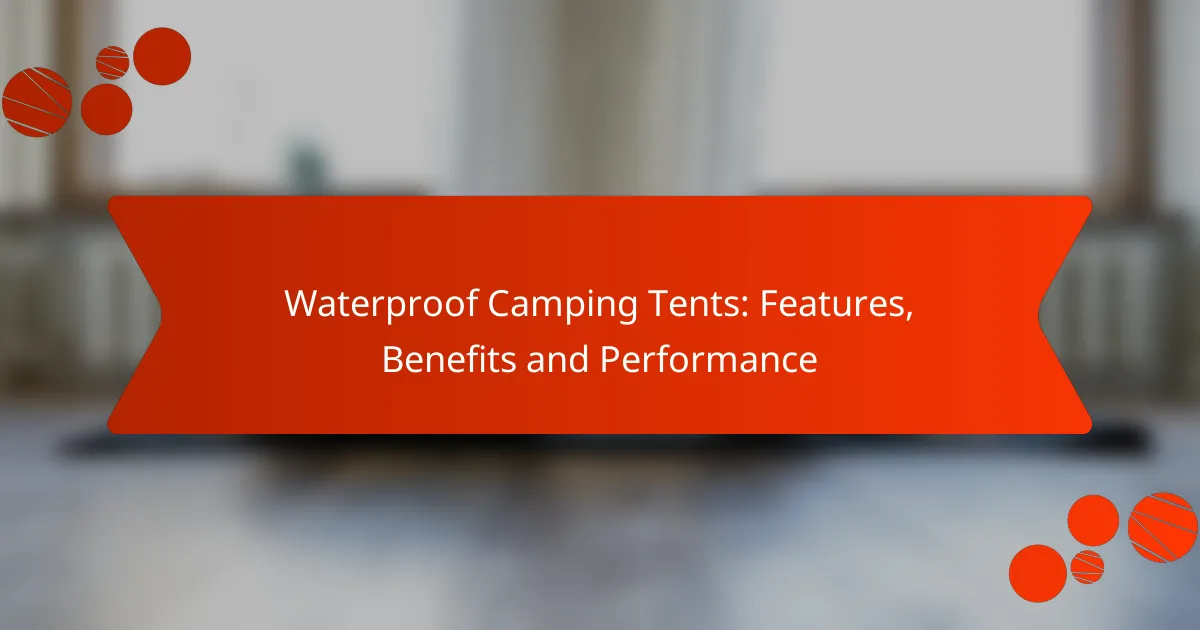When planning a camping trip with a group, selecting the right tent is crucial for ensuring comfort and convenience. Consider factors such as group size, weather conditions, and ease of setup to find a tent that meets your needs. A spacious and well-ventilated tent will enhance your outdoor experience, allowing for a comfortable stay while protecting you from the elements.
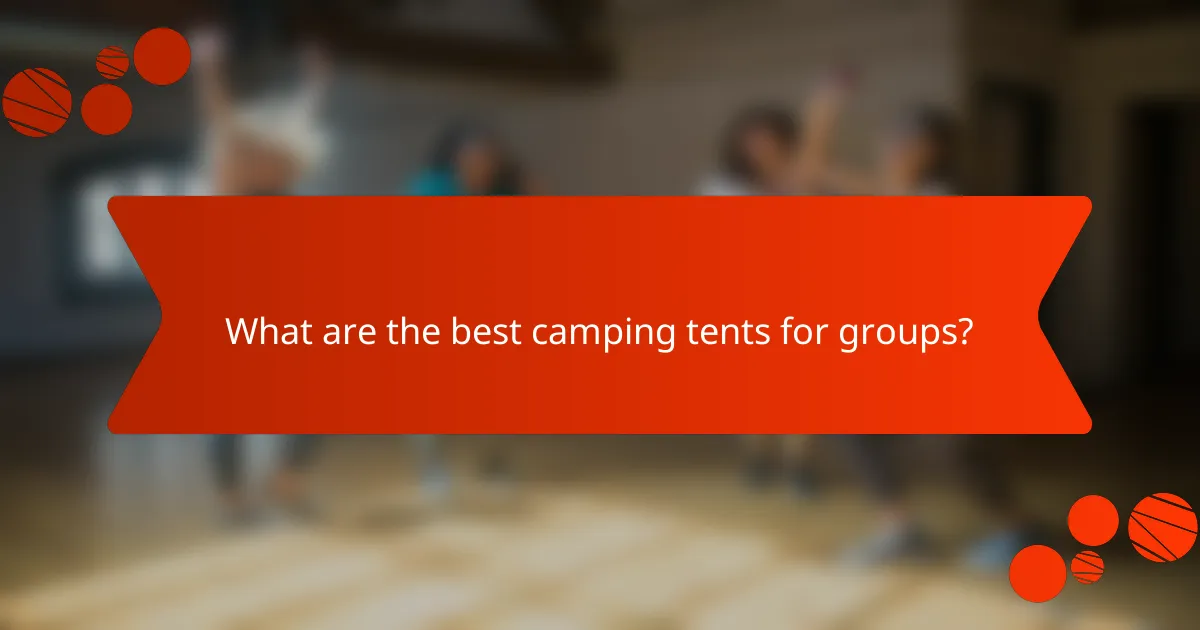
What are the best camping tents for groups?
The best camping tents for groups are spacious, easy to set up, and designed for comfort. When choosing a tent, consider the number of occupants, weather conditions, and the tent’s weight for transportation.
REI Co-op Base Camp 4 Tent
The REI Co-op Base Camp 4 Tent is ideal for small groups, accommodating up to four people comfortably. It features a durable design with a spacious interior, allowing for standing room and ample storage space for gear.
This tent includes two large doors for easy access and excellent ventilation. Its setup is straightforward, typically taking around 10-15 minutes, making it a practical choice for campers who want to maximize their time outdoors.
Big Agnes Copper Spur HV UL4 Tent
The Big Agnes Copper Spur HV UL4 Tent is a lightweight option perfect for backpacking groups. It can comfortably fit four people while remaining easy to carry, weighing just over 1.5 kg.
This tent boasts a quick setup process, often completed in under 5 minutes, thanks to its color-coded webbing and buckles. It also features excellent weather resistance, making it suitable for various conditions.
MSR Hubba Hubba NX 4 Tent
The MSR Hubba Hubba NX 4 Tent is designed for versatility and comfort, accommodating up to four campers. Its unique design allows for a spacious interior while maintaining a lightweight profile, ideal for longer hikes.
This tent is known for its durability and weatherproof features, including a rainfly and a bathtub floor to keep occupants dry. Setup is efficient, typically taking around 10 minutes, which is beneficial for groups eager to settle in after a long day of activities.
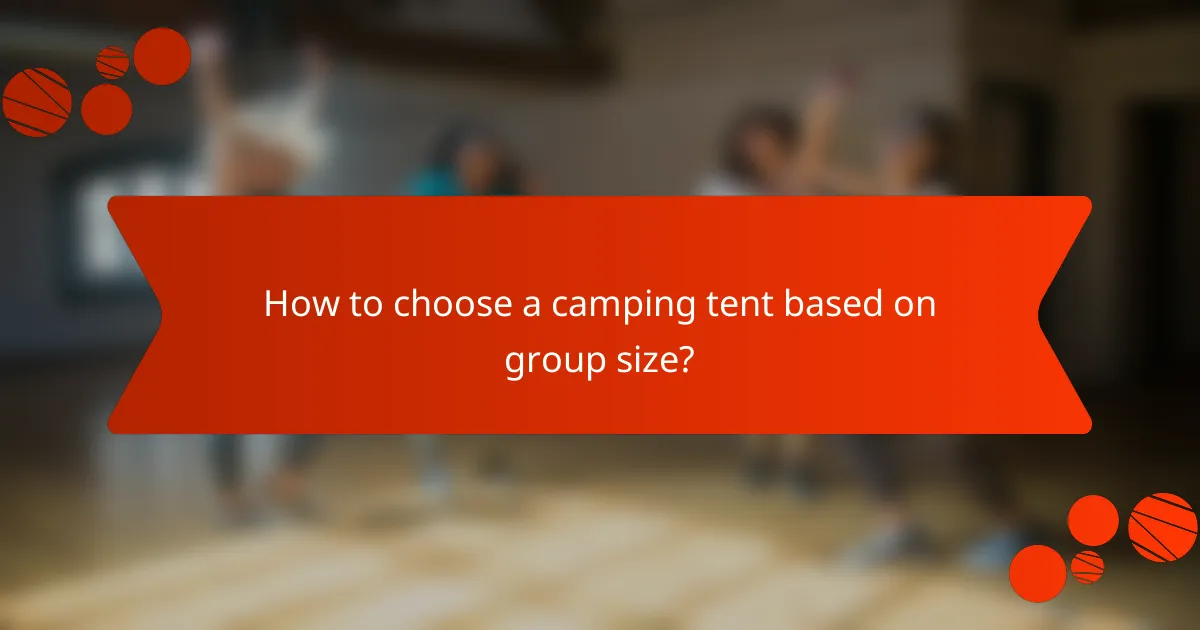
How to choose a camping tent based on group size?
Selecting a camping tent based on group size involves understanding the tent’s capacity and ensuring it meets your comfort needs. Consider how many people will be using the tent and the space required for gear, as this will influence your choice significantly.
Consider tent capacity ratings
Tent capacity ratings indicate how many people can sleep inside comfortably. Most manufacturers provide these ratings, but they often assume a snug fit, so it’s wise to choose a tent rated for one or two more people than your actual group size. For example, a tent rated for four people may only comfortably fit three with gear.
When comparing tents, look for those that specify the sleeping area in square feet. A general guideline is to allow about 20-30 square feet per person for a comfortable experience, especially if you plan to store gear inside.
Evaluate space requirements for comfort
In addition to capacity ratings, consider how much space you need for comfort. Taller individuals may prefer tents with higher peak heights, allowing for easier movement and sitting up. Additionally, think about the layout; tents with separate sleeping areas can provide more privacy for larger groups.
Factor in the space for personal items and gear. A good rule of thumb is to allocate extra space for backpacks, cooking equipment, and other essentials. If you’re camping in a wet environment, a vestibule can provide additional storage space outside the sleeping area, keeping your gear dry and organized.
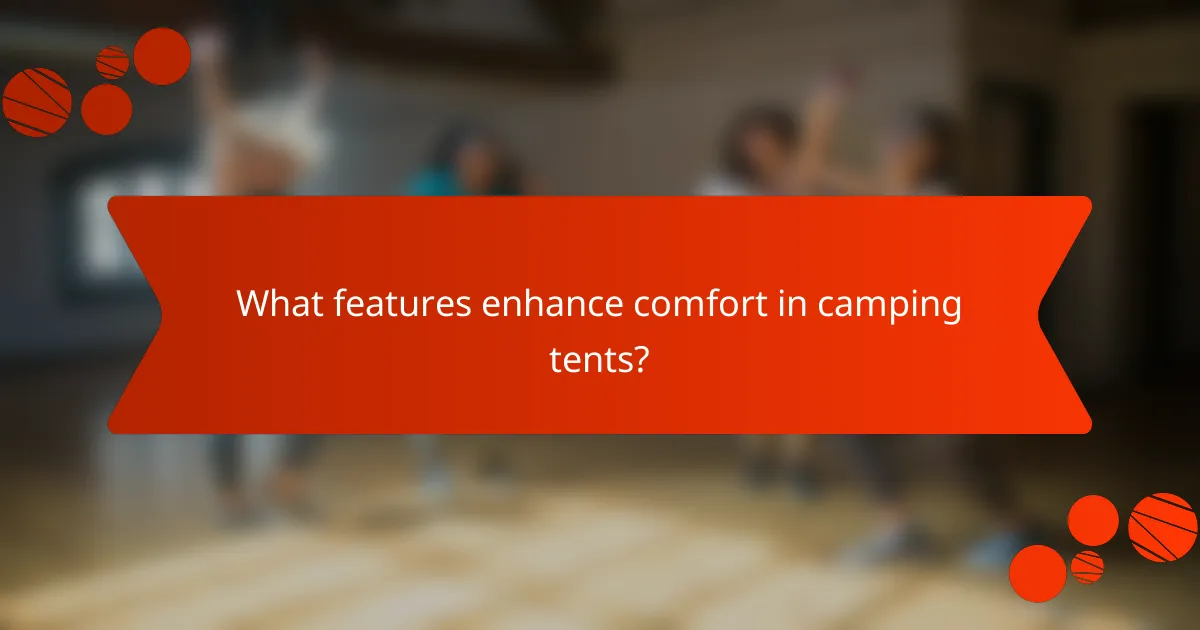
What features enhance comfort in camping tents?
Comfort in camping tents is primarily influenced by ventilation, interior space, and weather resistance. These features ensure a pleasant experience by regulating temperature, providing ample room, and protecting against the elements.
Ventilation options
Good ventilation is crucial for maintaining comfort inside a camping tent. Look for tents with multiple mesh windows and vents that allow for airflow while keeping insects out. Some models also feature adjustable vents that can be opened or closed based on weather conditions.
Consider tents with a rainfly that extends beyond the tent body, as this design can enhance airflow while preventing water from entering. Proper ventilation reduces condensation, which can lead to a damp and uncomfortable environment.
Interior space and headroom
Interior space and headroom significantly impact comfort, especially for group camping. Tents with a peak height of at least 1.5 meters allow most adults to stand comfortably, making it easier to move around and change clothes. Look for tents that offer enough floor space for sleeping arrangements and gear storage.
When selecting a tent, consider the number of occupants. A tent rated for four people may be cramped for four adults with gear, so opting for a larger size can enhance comfort. A good rule of thumb is to choose a tent that accommodates at least one extra person than you plan to have.
Weather resistance and insulation
Weather resistance and insulation are essential for a comfortable camping experience, especially in varying climates. Tents with a waterproof rating of at least 1,500 mm are generally suitable for light to moderate rain, while higher ratings are better for heavy downpours. Look for features like sealed seams and durable materials to enhance weather resistance.
Insulation can also play a role in comfort, particularly in colder conditions. Tents designed with thicker fabrics or additional layers can help retain warmth at night. Consider using a thermal sleeping bag and insulating ground pads to further enhance warmth and comfort during chilly nights.
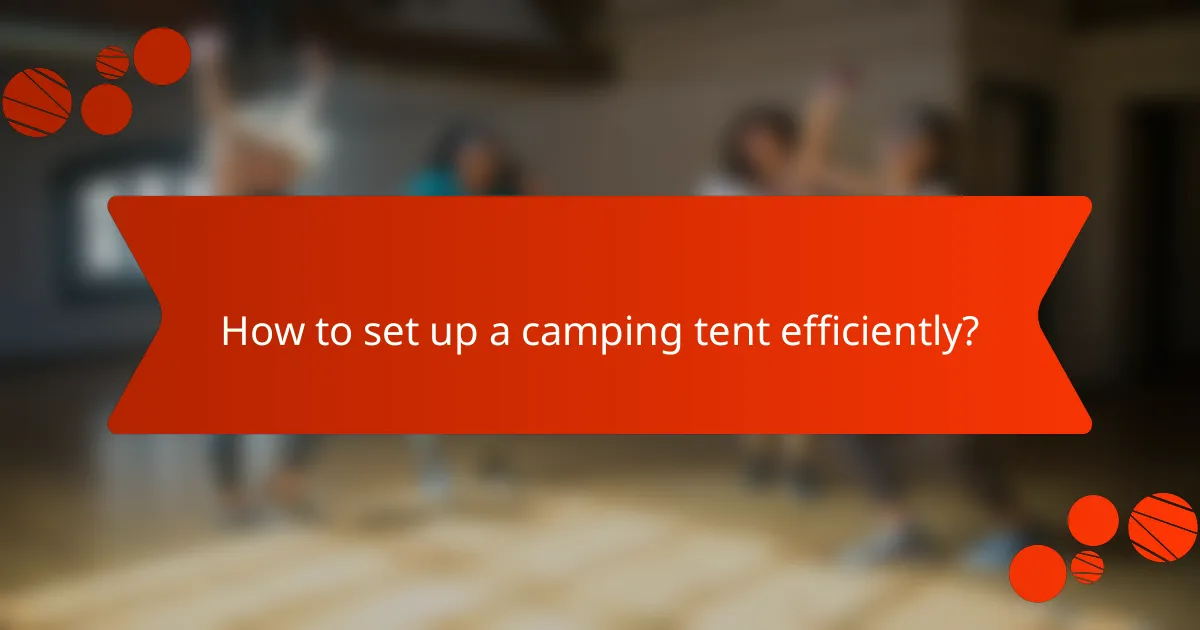
How to set up a camping tent efficiently?
Setting up a camping tent efficiently involves following a systematic approach that minimizes time and effort. Key steps include adhering to the manufacturer’s guidelines, utilizing color-coded components, and practicing the setup beforehand.
Follow the manufacturer’s instructions
Each camping tent comes with specific instructions that detail how to assemble it correctly. These guidelines often include information about the order of assembly, the types of stakes to use, and any unique features of the tent.
Ignoring these instructions can lead to improper setup, which may compromise the tent’s stability and waterproofing. Always keep the manual handy and refer to it during setup to ensure you are following the recommended procedures.
Use color-coded poles and clips
Many modern tents feature color-coded poles and clips to simplify the setup process. This design helps you quickly identify which pole connects to which part of the tent, reducing confusion and setup time.
When you arrive at your campsite, lay out the tent and match the colors of the poles with the corresponding clips. This method can significantly speed up the assembly, especially in low-light conditions or inclement weather.
Practice setup before the trip
Practicing the tent setup at home can save you time and frustration during your camping trip. Familiarizing yourself with the process allows you to identify any missing parts and understand how everything fits together.
Set aside a couple of hours to practice in your backyard or a local park. This practice run will help you become more efficient and confident when it’s time to set up in the field, ensuring a smoother camping experience.
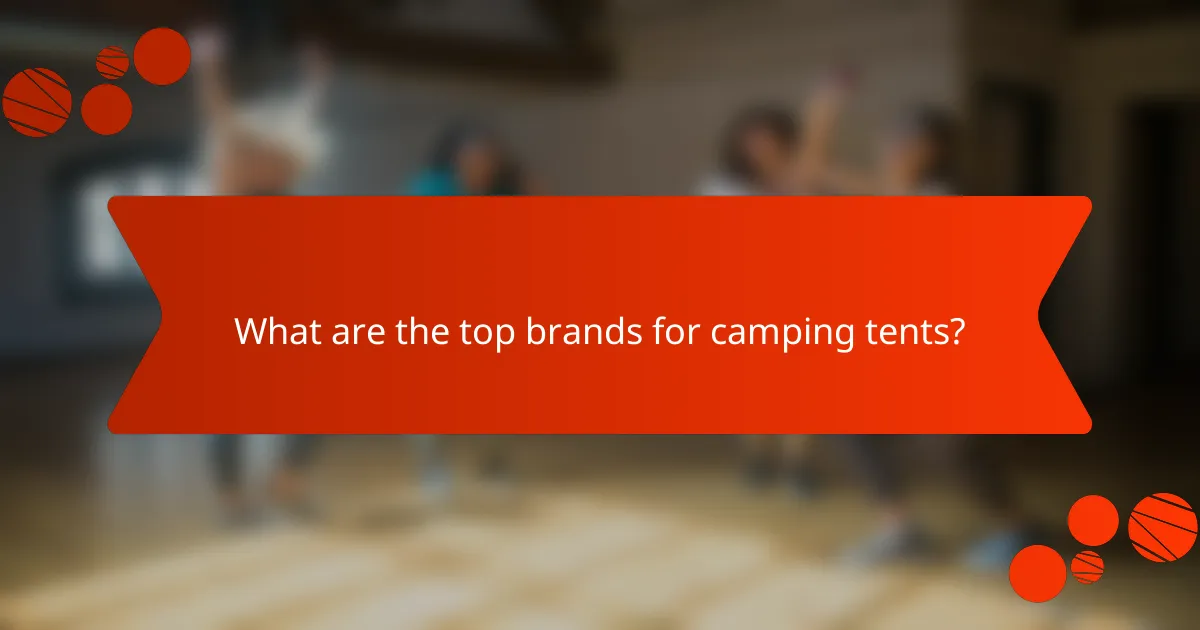
What are the top brands for camping tents?
The top brands for camping tents are known for their quality, durability, and user-friendly designs. Brands like REI Co-op, Big Agnes, and MSR offer a range of options suitable for various group sizes and camping conditions.
REI Co-op
REI Co-op is recognized for its high-quality camping tents that cater to outdoor enthusiasts. Their tents are designed with user comfort in mind, often featuring spacious interiors and easy setup processes.
Popular models, such as the REI Co-op Half Dome, offer good weather resistance and are available in sizes accommodating 2 to 6 people. When selecting a tent from REI, consider your group size and the specific camping environment.
Big Agnes
Big Agnes specializes in lightweight and innovative camping tents, making them ideal for backpackers and campers who prioritize portability. Their tents often incorporate advanced materials for durability while remaining easy to carry.
The Big Agnes Copper Spur series is a favorite among solo and small group campers, offering excellent space-to-weight ratios. Ensure to check the tent’s weight and packed size to match your hiking needs.
MSR
MSR (Mountain Safety Research) is known for its rugged and reliable tents, particularly suited for extreme weather conditions. Their designs focus on stability and protection, making them a popular choice for serious adventurers.
The MSR Hubba series provides options for solo to group camping, with features like a strong pole system and waterproof materials. When choosing an MSR tent, consider the expected weather conditions and terrain to ensure optimal performance.
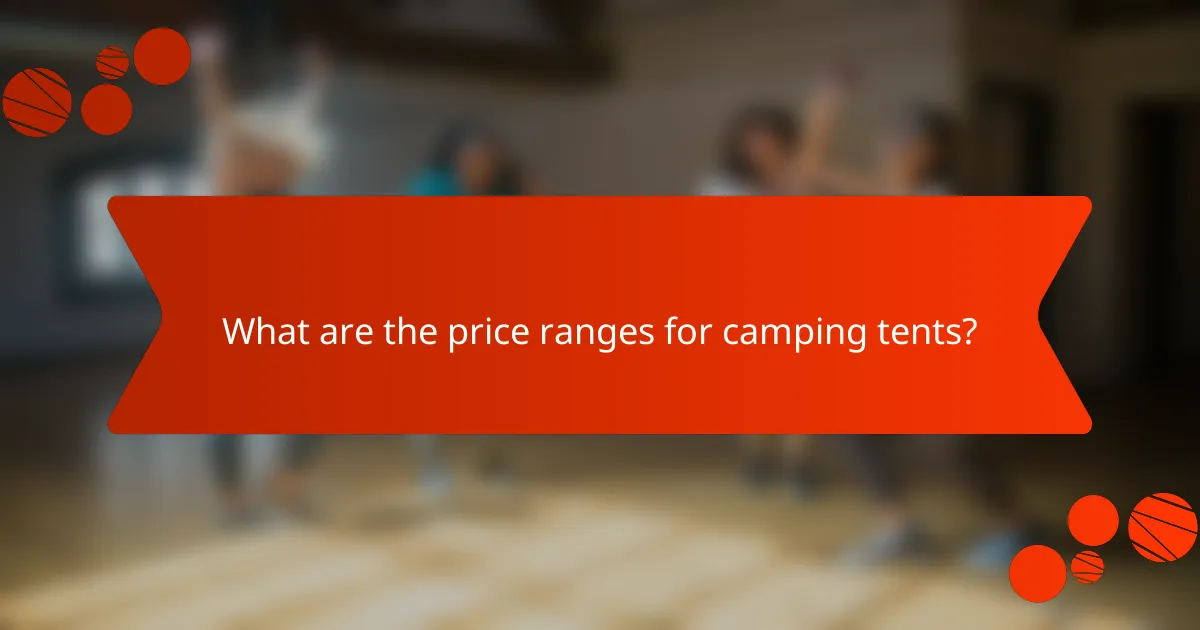
What are the price ranges for camping tents?
Camping tents typically range from budget-friendly options under $100 to more advanced models priced between $100 and $300. When choosing a tent, consider factors such as size, durability, and weather resistance to ensure it meets your needs.
Budget options under $100
Budget camping tents under $100 are ideal for casual campers or those just starting out. These tents usually offer basic features and are suitable for fair weather conditions, making them perfect for weekend trips or backyard camping.
When selecting a budget tent, look for models that are easy to set up and have adequate ventilation. Common brands in this price range include Coleman and Alps Mountaineering, which offer reliable options for families or small groups.
Mid-range tents between $100-$300
Mid-range tents priced between $100 and $300 provide a balance of quality and features, making them suitable for more serious campers. These tents often include better materials, improved waterproofing, and enhanced durability for various weather conditions.
In this price range, you can find options from brands like REI and MSR that offer additional features such as multiple rooms, higher peak heights, and better insulation. Consider your group size and camping frequency when investing in a mid-range tent to ensure it meets your long-term needs.
